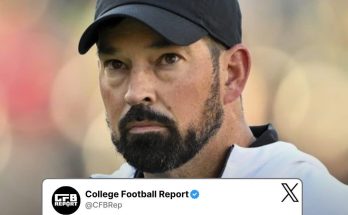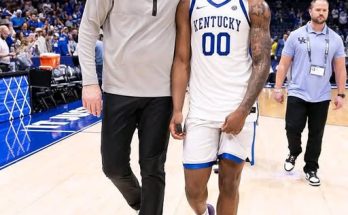Fantasy football is a game of strategy, research, and sometimes, gut instinct. Every season, managers scour player stats, injury reports, and expert analyses to build the perfect roster. But one piece of advice circulating among fantasy experts this year is clear: steer clear of this Baltimore Ravens tight end. While the Ravens have a reputation for producing solid tight ends, the current situation suggests that fantasy managers should think twice before drafting this particular player. Here’s why.
The Baltimore Ravens have long been a team that utilizes tight ends effectively. From Todd Heap to Dennis Pitta to Mark Andrews, the franchise has a history of featuring tight ends in their offensive schemes. This tradition has led many fantasy managers to automatically assume that any starting tight end for the Ravens is a safe bet. However, this season, that assumption could be a costly mistake. The player in question—whether due to injury concerns, offensive scheme changes, or increased competition for targets—simply doesn’t offer the same value as his predecessors.
First, let’s address the injury concerns. Injuries are an unavoidable part of football, but some players seem more prone to them than others. The Ravens’ tight end in question has struggled to stay on the field consistently. Whether it’s nagging soft-tissue injuries or more severe setbacks, his availability week-to-week is a major red flag. Fantasy football is all about reliability. Even if a player has explosive potential, it means nothing if he’s sidelined for half the season. Managers need players who can contribute consistently, and this tight end’s injury history makes him a risky investment.
Beyond injuries, the Ravens’ offensive approach under coordinator Todd Monken has evolved. While the team still values tight ends, the passing game has become more diversified. The addition of dynamic wide receivers like Zay Flowers and the continued development of Rashod Bateman means there are more mouths to feed in the passing attack. Even Mark Andrews, the Ravens’ star tight end, has seen his target share fluctuate as the offense spreads the ball around. For the tight end in question, this means fewer opportunities to make an impact. In fantasy football, volume is king. Without consistent targets, even the most talented players struggle to put up meaningful numbers.
Another factor to consider is the Ravens’ run-heavy identity. Lamar Jackson is one of the most electrifying dual-threat quarterbacks in the league, and the team’s offense is built around his ability to make plays with his legs. While this makes the Ravens a formidable real-life football team, it doesn’t always translate to fantasy success for pass-catchers. The run game dominates time of possession, limiting the number of passing attempts overall. For a tight end already fighting for targets in a crowded receiver room, this is another hurdle to fantasy relevance.
Then there’s the issue of competition within the tight end room itself. Mark Andrews is the undisputed TE1 in Baltimore, and when healthy, he commands a significant share of the targets. The tight end in question is, at best, the second option at the position. Even in two-tight end sets, his role is more of a blocker than a receiver. Fantasy managers should always be wary of players who aren’t the primary option at their position. The difference between a TE1 and a TE2 in fantasy production can be massive, and drafting a backup tight end is rarely a winning strategy.
Some might argue that this tight end could have breakout potential, especially if Andrews were to miss time with an injury. While that’s theoretically possible, banking on an injury to another player is a dangerous fantasy strategy. Plus, even if Andrews were sidelined, there’s no guarantee this tight end would step into a featured role. The Ravens could easily redistribute Andrews’ targets to their wide receivers or even involve another tight end on the roster. Fantasy success is about predictability, and this player’s path to relevance is too uncertain to trust.
It’s also worth noting that the tight end position in fantasy football is notoriously top-heavy. Outside of the elite few—players like Travis Kelce, Sam LaPorta, and Mark Andrews—the position offers very little week-to-week consistency. Most fantasy managers are better off streaming tight ends based on matchups rather than wasting a mid-to-late-round pick on a high-risk, low-reward option like this Ravens tight end. The opportunity cost of drafting him over a high-upside wide receiver or a reliable running back is simply too high.
Finally, let’s talk about draft value. Fantasy football is as much about maximizing value as it is about picking the right players. Even if this tight end were to outperform expectations, the chances of him providing league-winning value are slim. Meanwhile, the upside of taking a flier on a rookie wide receiver or a handcuff running back with breakout potential is much higher. Fantasy drafts are won in the middle and late rounds, and wasting a pick on a player with so many question marks is a mistake savvy managers should avoid.
In conclusion, while the Baltimore Ravens have a storied history of productive tight ends, this particular player is not worth the fantasy investment. Between injury concerns, a crowded pass-catching corps, a run-heavy offense, and his place on the depth chart, the odds are stacked against him. Fantasy football experts are warning managers to steer clear for good reason. There are far safer and more impactful players to target in drafts this season. Don’t let the Ravens’ tight end legacy fool you—this year, it’s best to look elsewhere for fantasy production.



